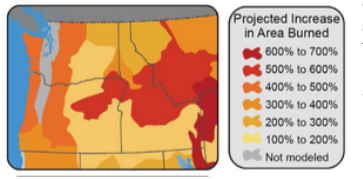
As time runs out to do something meaningful to mitigate the amount of damage climate change will do to us, the Trump administration notified the United Nations last week that the U.S. would continue withdrawing from the Paris Agreement.
Locally, the city of Eugene released a draft of the Climate Action 2.0, showing that a climate change future could be unkind to the area. It offers some recommendations. The report says about 1.1 million metric tons of carbon dioxide equivalent are emitted annually in Eugene, and more action is needed to meet the city’s climate recovery ordinance passed in 2014.
Eugene and the area has a bleak future thanks to climate change, the report says. By 2100, Eugene’s climate is projected to be similar to Chino, California, in San Bernardino County.
By 2040, the Cascades snowpack could be gone, leading to a reduced stream flow by 40 to 60 percent. Among other water-related issues, hydroelectric power will generate less electricity during the summer. The wet months will have more rain and flooding but less snow.
In addition to the weather change, Eugene could experience a high number of climate refugees relocating to the area. The report estimates Eugene could have a population of 273,234 by 2065.
And it’s gonna be a hot mess here — literally. By 2040, the area can expect a 400 to 500 percent increase in the number of acres burned. Besides the increase of burning land, residents will be exposed to poor air quality during wildfire season.
The report breaks down the area’s greenhouse gas emissions into three categories: energy used in buildings, transportation fuels and consumption.
Energy used in buildings makes up 12 percent of the inventory. Some recommendations to cut down on this area include revising city land use policies to encourage higher density, climate impacts of single-family homes and incentives and education on graywater use at home.
Although Gov. Kate Brown signed HB 2001 to end single-family zoning, Eugene City Council opposed the bill and tried to kill it.
Transportation is responsible for 19 percent of greenhouse gas emissions. The report recommends subsidies for Ride Source transportation and offering bike, e-bike and electric vehicles on loan. In addition, the government should subsidize e-bikes and electric vehicles for low-income people and people with disabilities.
The largest contribution to greenhouse gas emissions in the area is due to consumption: 69 percent. Emissions from consumption accumulate from creating goods globally and continues all the way to a product’s disposal.
The City Council is working on an ordinance that attempts to ban polystyrene and would penalize restaurants and other vendors that don’t comply. However, some advocates have expressed concern that the city won’t enforce the regulation.
Those responsible for consuming the most are households that earn more than $100,000 a year, the city’s report says, referencing Oregon Department of Environmental Quality. They consume twice the amount as households earning less than $50,000 a year.
Eugene City Councilors plan to discuss the first draft 5:30 pm Monday, Nov. 18. From there, community members can offer input at a Fix-it Fair from noon to 3 pm Sunday, Nov. 24, or through the city’s Engage Eugene webpage. The Council will take its final action Monday, Jan. 15.
To read the report, visit engage.eugene-or.gov/sustainability.